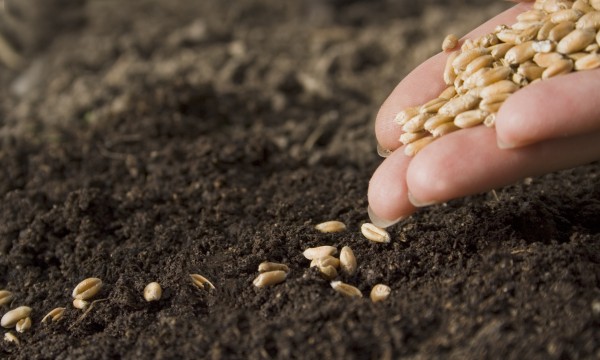Once the soil warms in spring, you can sow what you want to grow by planting seeds directly in the ground. Here are nine seed-planting tips to help welcome the change of seasons!
- Browse Categories
- All Tips
-
Home & Garden
- All
- Appliances
- Bathroom
- Cleaning
- Crafts
- Decorating
- Electrical
- Flooring
- Furniture
- Garage Door
- Gardening
- Green Living
- Heating
- Home Alarm Systems
- Home Maintenance
- Home Remedies
- Home Security
- Home Staging
- House Sitting
- Junk Removal
- Kitchen
- Lawn Care
- Lock Systems
- Moving
- Outdoor Living
- Pest Control
- Plumbing
- Renovation
- Roofing
- Snow Removal
- Storage
- Tools
- Tree Service
- Health
- Family
- Travel
- Auto
- More Tips

9 tips for successfully sowing seeds in the spring garden
June 30, 2015

1. Sow seeds in a pattern
Can't tell seedlings from weeds?
- If you sow seeds in a pattern, such as a straight or zigzag line, it's easier to eliminate weeds by finding lookalike seedlings.
2. Consider using potting soil
If your soil tends to form a crust as it dries, cover the seeds with potting soil instead of regular garden soil.
3. Space the seeds in your garden
Use an empty soft drink bottle as your measuring tool.
- Find the recommended distance between seeds and then cut off the tapered top of the bottle so its diameter equals that distance.
- When you start planting, firmly press the bottle, cut edge down, into the soil and place a seed in the centre of the circle it makes. Line up the bottle so its edge touches the curve of the first impression, press down again and plant another seed in the centre.
- Repeat until you've filled your rows.
4. Overseed a little
But don't get carried away!
- Planting two seeds instead of one guards against skips in the row, but if you plant far too many seeds, you'll have a lot of thinning to do.
- If the seeds are small and difficult to sow at the desired spacing, mix them with dry sand before sowing.
- You can also buy seeds encased in easy-to-handle clay pellets or attached to biodegradable tape.
5. Make your own seed tape
Make your own seed tape by placing seeds on strips of toilet tissue.
- Position the seeds at the proper spacing, fold the tissue in half lengthwise, and lightly moisten it with a pump spray bottle.
- Press it flat, let it dry and then simply cover it with soil when you're ready to plant.
6. Thin to win
Unless you've spaced your seeds widely as you planted them, you will need to thin the seedlings. If they are too close together, they don't have room to grow properly. Removing small, deformed or overcrowded seedlings helps healthy specimens perform better.
- Thin most seedlings when the first set of true leaves appears.
- Before thinning, dampen the soil and let it sit for an hour to limit damage to roots when you separate the plantlets.
- After thinning, water the remaining plants to settle the soil that was disturbed around their roots.
7. Thin leafy greens gradually
You can enjoy eating baby lettuce when the plants are only three centimetres tall.
- If you pull plants a few at a time, you'll have a longer harvest season; each time you thin the plants, the remaining ones will have more room to grow.
8. Save volunteers
Sometimes when you're weeding, you'll encounter volunteer plants that you'll want to transplant.
- Be ready for this by having a small bucket with a few inches of water handy to carry them in. Lift the misplaced plants from beneath and get them settled in a new home as quickly as you can.
9. Scarify or stratify difficult seeds
Most seeds are eager to germinate soon after they come in contact with warm, moist soil, but some need extra help.
- Seeds with very hard seedcoats sprout faster when the seedcoats are nicked or filed to help them take up water — a practice called scarification.
- Other seeds must be tricked into thinking they have waited in moist soil through winter. This trick is called stratification.






